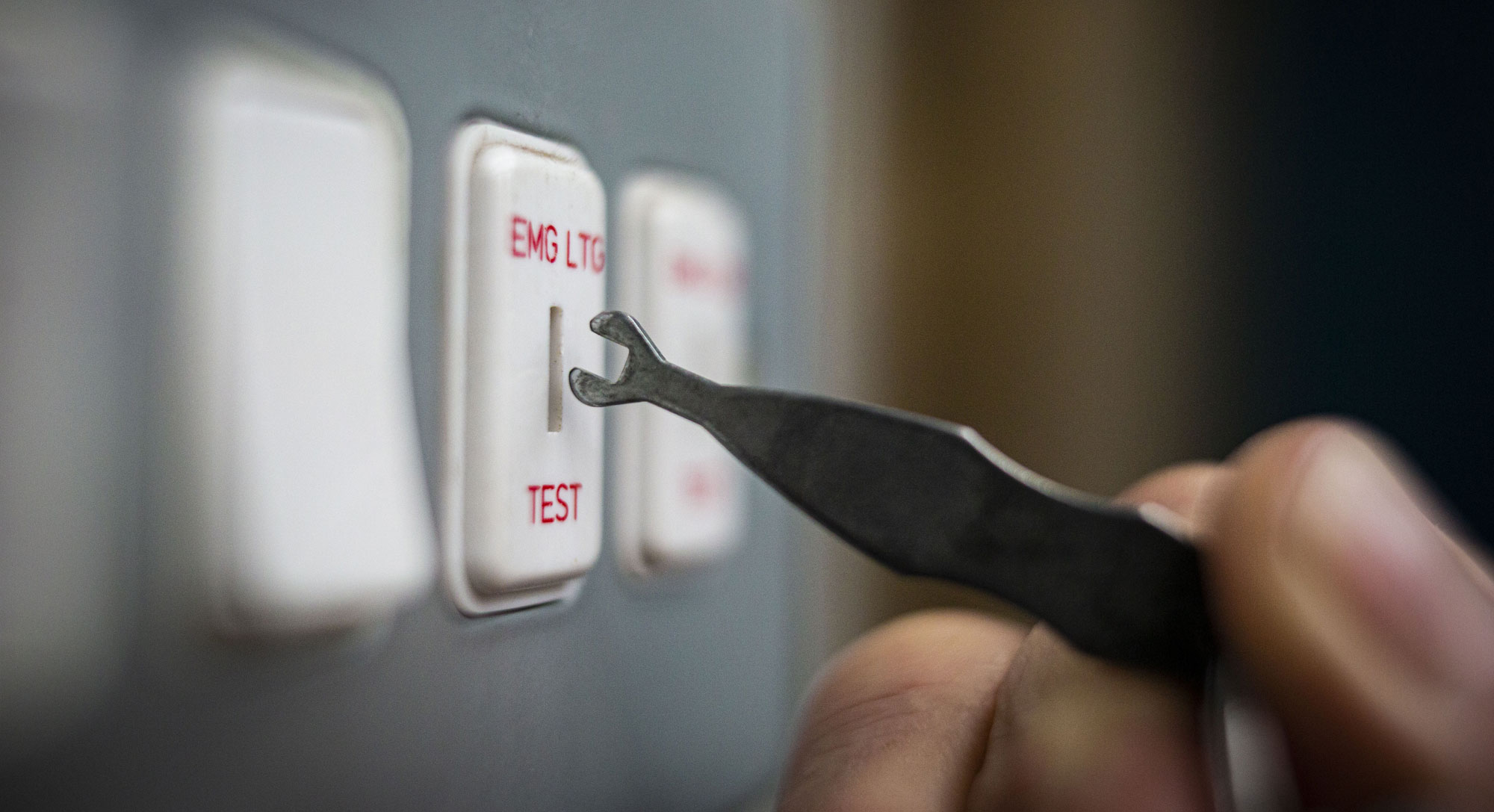Regular servicing and periodic maintenance of emergency lighting systems is essential. The occupier/owner of a building must employ a competent person to supervise the servicing of the system. In most cases outside contractors are used to maintain the emergency lighting on behalf of the occupier/owner. It has become apparent that in some cases contractors are still insisting on testing regimes that were in the previous BS5266 Pt 1 – 1999. For example, 6 monthly tests are no longer in BS5266 Part 8, 2004. There are therefore a lot of Responsible Persons (RP’s) paying out for quarterly testing of their emergency lighting when they could have a ‘competent person’ conduct an in house ‘flick’ test and only pay for the annual periodic inspection/discharge test to be undertaken by a contractor.
- contactus@gcsalarms.co.uk
- GCS Alarms Ltd. The BARN, Wensley Stud, Weeley, Clacton, CO16 9BH
Emergency Lighting Test

The Legal Requirement
Under the Regulatory Reform (Fire Safety) Order 2005, article 17 details the Responsible Person duty on maintenance;
17.(1) Where necessary in order to safeguard the safety of relevant persons the responsible person must ensure that the premises and any facilities, equipment and devices provided in respect of the premises under this Order or, subject to paragraph (6), under any other enactment, including any enactment repealed or revoked by this Order, are subject to a suitable system of maintenance and are maintained in an efficient state, in efficient working order and in good repair.
Emergency lighting falls under this article as it function is to indicate clearly means of escape, provide illumination along such routes to allow safe egress through escape routes and exits provided and to ensure fire alarm points, extinguishers etc provided can be readily located.
British Standard BS5266 is the official guidance document in regards to emergency lighting with Part 1, 2005 and Part 8, 2004 dealing with maintenance and servicing.
Below is a summary of the guidance on testing emergency lighting from BS5266 Part 8, 2004. The British Standard is not a legal requirement in itself; however it is a benchmark from where the fire authority and other enforcing authorities work from. In order to demonstrate compliance and ‘due diligence’ alternative testing arrangements could be put in place so long that they are to the same standard or better to the British Standard concerned.
Practical Guidance on Testing Emergency Lighting from Bs5266 Part 8, 2004
Daily
Indicators of central power supply shall be visually inspected for correct operation.
NOTE; this is a visual inspection of indicators to identify that the system is in a ready condition and does not require a test of operation.
Sometimes this cannot be practical at unmanned sites; the fire risk assessment should detail site specific requirements.
Monthly
If automatic testing devices are used, the results of the short duration tests shall be recorded.
Tests shall be carried out as follows:
a) Switch on in the emergency mode each luminaries and each internally illuminated exit sign from its battery by simulation of a failure of the supply to the normal lighting for a period sufficient to ensure that each lamp is illuminated.
During this period, all luminaires and signs shall be checked to ensure that they are present, clean and functioning correctly.
At the end of this test period, the supply to the normal lighting should be restored and any indicator lamp or device checked to ensure that it is showing that the normal supply has been restored.
b) In addition to a), for central battery systems, the correct operation of system monitors shall be checked.
c) In addition to a), for generating sets, refer to the requirement of ISO 8528-12.
NOTE: The period of simulated failure should be sufficient for the purpose of this clause whilst minimising damage to the system components e.g. lamps. This would involve a ‘flick’ test and inspection of each emergency lighting unit. Where there are a large number of units, this could be split into sections on a rotational basis; the fire risk assessment should detail site specific requirements.
Annually
If automatic testing devices are used, the results of the full rated duration test shall be recorded.
For all other systems the monthly inspection shall be carried out and the following additional tests made:
a) each luminaire and internally illuminated sign shall be tested for its full rated duration in accordance with the manufacturer’s information;
b) the supply of the normal lighting shall be restored and any indicator lamp or device checked to ensure that it is showing that normal supply has been restored. The charging arrangements should be checked for proper functioning;
c) the date of the test and its results shall be recorded in the system logbook;
d) in addition, for generating sets, refer to the requirements of ISO-12.
NOTE: As well as following the monthly test procedure, a full test of the units fore its full duration in accordance with manufacturer’s guidance and then normal lighting to be restored and check any indicator lamps or devices to ensure normal supply has been restored; the fire risk assessment should detail site specific requirements.
Where emergency lighting is being newly installed, the Occupier/Owner should ensure a completion certificate is obtained to demonstrate the system is installed in line with the requirements of BS5266, Part1, 2005.
Further information call GCS Alarms Ltd (Fire & Security Systems) 01255 220316.
